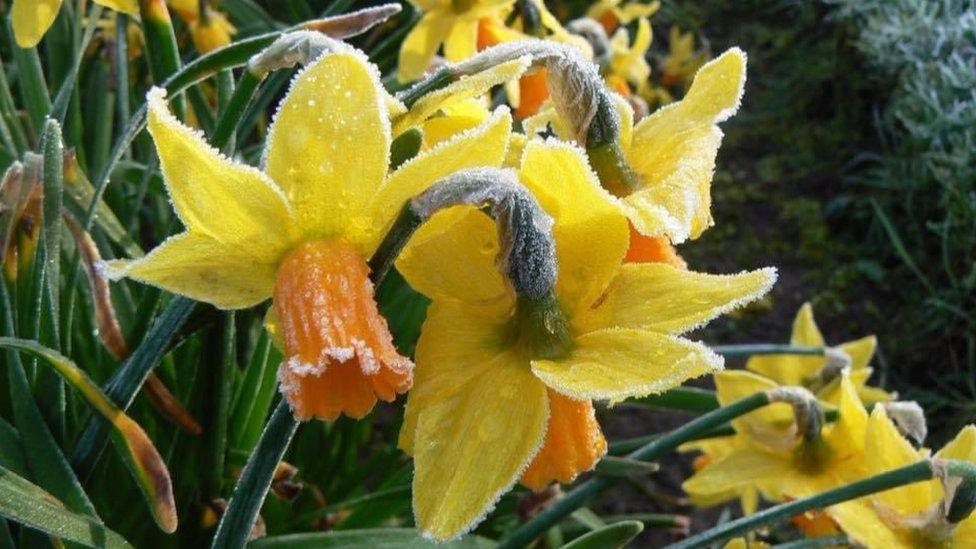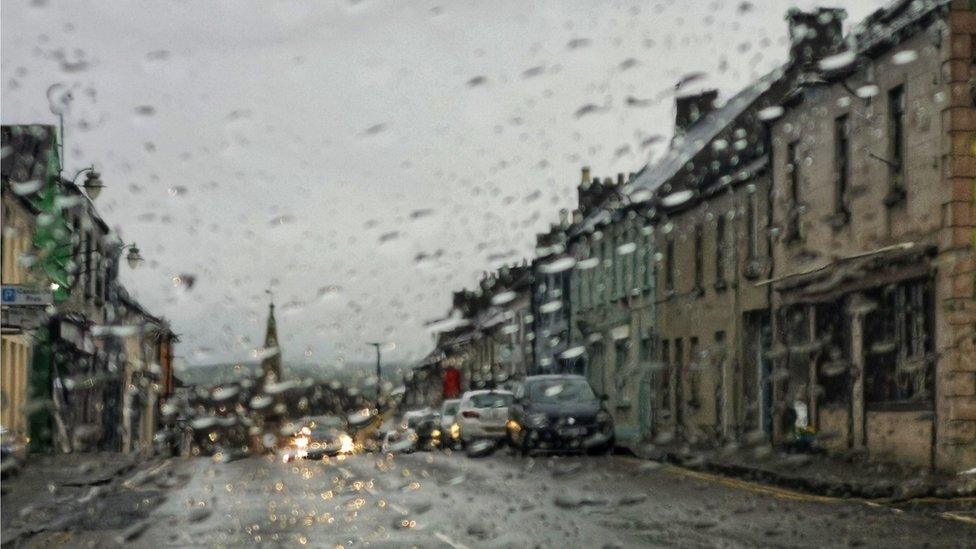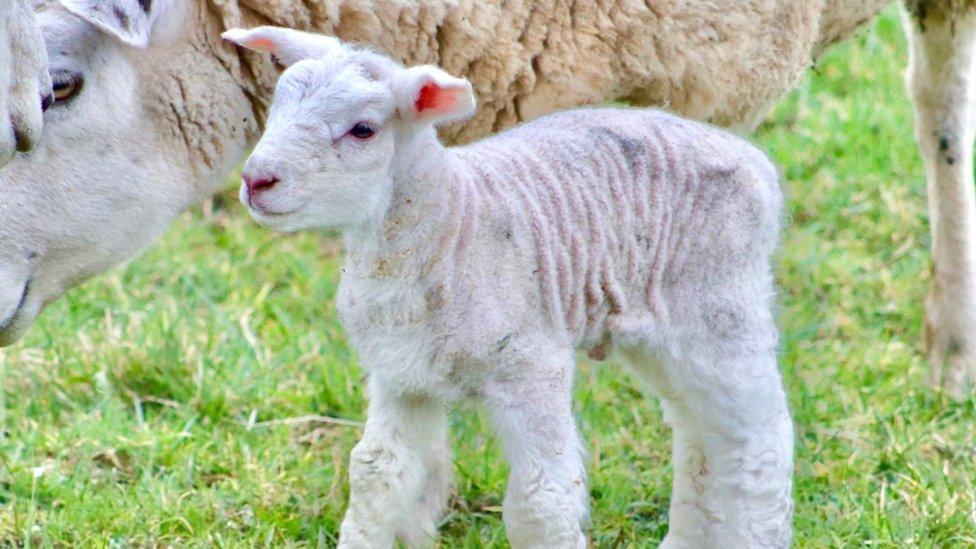Northern Ireland March weather has made for month of contrasts
- Published

You have probably heard the saying "mad as a March hare".
This month the saying has rung especially true as the weather has been all over the place - to put it mildly.
It has always been a month of contrasts and by halfway into March we had warnings of ice, snow and heavy rain.
There has been significant snowfall in some areas - enough to build a whole snow family - and temperatures fell to -9C in Castlederg, County Tyrone.
That was on 8 March, making it the coldest March night since 2010.

Ballycastle in the rain
Then the rains came, with a warning of heavy downpours from the Met Office in the middle of the month.
Over a 24-hour period, Derrylin in County Fermanagh recorded 35.4mm of rainfall, Killowen in County Down measured 29mm and Killylane, in the Glens of Antrim, recorded 26mm.
This was followed by a dramatic leap in temperature just ahead of St Patrick's Day.
Helen's Bay recorded 16.1C on 16 March, making it the warmest day of the year so far and the highest temp in Northern Ireland since 13 November.
Just more than seven days earlier was that icy -9C night in Castlederg - what a difference a week makes.

It is not unusual for the fair-skinned to get sunburn on St Patrick's Day as the mid-March sun is of a similar strength to September.
This year the spring equinox was the following day, 20 March, when the sun sits directly over the Earth's equator as it heads northward.
Both hemispheres share the sun's rays equally at the equinox, and night and day are roughly the same length.
Spring is said to be a transitional season and wide variations in weather can occur, from wintry conditions in the first half of the season to warm, almost summer like conditions any time from late April onwards.
The sun is strengthening significantly, the oceans are slowly warming and the jet stream is usually further north, which influences where our air is coming from.
Air coming in from a southerly direction will always be warmer.

With the fierce changes in weather, there is often some truth in a saying often used in reference to March: "In like a lion, out like a lamb."
It is likely our recent snow, towards the beginning of the month, is down to SSW - or sudden stratospheric warming - which five years ago helped bring about the infamous Beast from the East.
John Wylie, a former colleague who works with the Met Office in Northern Ireland, said that cold and wintery conditions, including significant snowfall, are not uncommon in March.
In 2010, 2013 and 2018, each March had highly disruptive snowfall events.

Nature has a habit of redressing the balance and the exceptional mildness of February (2.5C above average) has been countered by much colder conditions during the first half of March, with average temperatures around 2.5C below average.
At present, it is possible March could end up colder than February which, although unusual, is certainly not without precedent.
The latter part of this month has been quite mild, windy at times and wet - a wetter than average month right across Northern Ireland.
Up to 23 March, Aldergrove will have had its fourth wettest March on record - with still a week of weather to go.
This weekend the clocks spring forward just as a northerly Arctic wind sets in to bring Sunday temperatures back down to single digits.
So after a roaring start to spring lets hope we skip through April like a newborn lamb with plenty of sunshine and not as many showers.

Weather wisdom: Cats, dogs and pinecones
There were a couple of well-worn weather phrases in the article above, but what about some of the other sayings and pieces of traditional wisdom that we use to predict, describe or decry the weather?
Here's a look at a few more.
How about "too cold to snow"? This is a saying backed up by science.
The colder it gets, the less water vapour it can hold, which reduces the likelihood of snow.
But there are many other factors to consider when it comes to whether or not it will snow and it's unlikely that across the island of Ireland we would experience temperatures low enough.
So true, but unlikely to happen here.

Can dogs sense the stormy weather coming?
As pet owners and friends of four-legged creatures everywhere can attest, animals can often be predictors of thunderously stormy weather.
Cats and dogs are more sensitive than humans to sounds, smells and changes in atmospheric pressure.
Their heightened senses can allow them to pick up hints that a storm is coming well before their owners catch wind of it.
Just before a storm, your cat's inner ears may detect the sudden fall in atmospheric pressure and it may have learned to associate this with an impending storm.
If a storm is already raging in the distance, it may be able to perceive the faint rumble of thunder.
Likewise, your dog may be able to smell the incoming rain or the characteristic whiff of ozone gas, often created by lightning which has a sharp, metallic odour.
And finally what about this old (sort of) chestnut.
"Pinecones open up when good weather is coming" is another with a kernel of truth.
In dry weather, pinecones dry out, causing their scales to open out.
In damp conditions, they become more flexible and return to a more closed shape.
